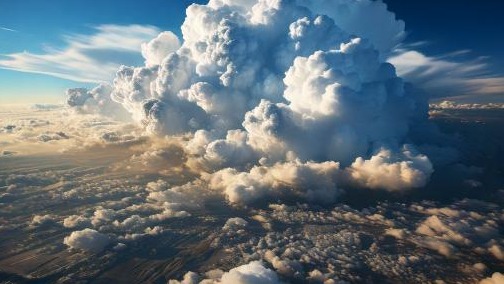Weather Wonders is a fascinating and complex phenomenon that affects our daily lives in countless ways. From the gentle warmth of a sunny day to the ferocity of a hurricane, weather encompasses a wide range of conditions that can inspire awe, fear, and respect. In this exploration of weather wonders, we will delve into the science behind weather patterns, the beauty of natural phenomena, and the impact of climate change on our planet.
Understanding Weather: The Basics
What is Weather?
Weather refers to the short-term atmospheric conditions in a specific area at a given time. It includes elements such as temperature, humidity, precipitation, wind speed, and atmospheric pressure. Weather can change rapidly, influenced by various factors including geographical location, time of year, and atmospheric conditions.
The Atmosphere: Our Protective Blanket
The Earth’s atmosphere is composed of layers of gases that surround the planet. These layers play a crucial role in regulating temperature and protecting life from harmful solar radiation. The atmosphere is divided into several layers:
- Troposphere: This is the lowest layer where all weather events occur. It extends from the Earth’s surface up to about 8-15 kilometers (5-9 miles) high.
- Stratosphere: Located above the troposphere, this layer contains the ozone layer, which absorbs and scatters ultraviolet solar radiation.
- Mesosphere: This layer is where meteors burn up upon entering the Earth’s atmosphere.
- Thermosphere: Known for its high temperatures, it contains the ionosphere, which reflects radio waves and is crucial for communication.
- Exosphere: The outermost layer where atmospheric particles are so sparse that they can travel hundreds of kilometers without colliding with one another.
The Science of Weather Patterns
Atmospheric Pressure and Wind
Atmospheric pressure is the weight of air above us and varies with altitude and weather conditions. High-pressure systems are generally associated with clear skies and calm weather, while low-pressure systems can lead to stormy conditions.Wind is created by differences in atmospheric pressure. Air moves from areas of high pressure to low pressure, resulting in various wind patterns that influence weather systems globally.
Precipitation: Rain, Snow, Sleet, and Hail
Precipitation occurs when moisture in the atmosphere condenses into water droplets or ice crystals that fall to the ground. The type of precipitation—rain, snow, sleet, or hail—depends on temperature and atmospheric conditions:
- Rain: Liquid water droplets that fall when temperatures are above freezing.
- Snow: Ice crystals that form when temperatures are below freezing.
- Sleet: Small ice pellets that occur when rain freezes before reaching the ground.
- Hail: Larger ice balls that form in thunderstorms with strong updrafts.

Extreme Weather Events
Extreme weather events are dramatic manifestations of nature’s fury. These events can cause significant damage and loss of life:
- Hurricanes: Powerful tropical storms characterized by strong winds and heavy rainfall. They form over warm ocean waters and can lead to devastating flooding and storm surges.
- Tornadoes: Violently rotating columns of air that extend from thunderstorms to the ground. Tornadoes can cause destruction along their path with wind speeds exceeding 300 mph.
- Blizzards: Severe snowstorms with strong winds and low visibility. Blizzards can disrupt transportation and pose risks to safety.
- Heatwaves: Prolonged periods of excessively hot weather that can lead to health risks such as heat exhaustion or heat stroke.
The Beauty of Weather Phenomena
While weather can be destructive, it also presents stunning natural phenomena that captivate our imagination.
Rainbows
Rainbows are optical phenomena caused by sunlight refracting through water droplets in the atmosphere. They appear as a spectrum of colors in a circular arc and are often seen after rain showers when sunlight breaks through clouds.
Thunderstorms
Thunderstorms are characterized by lightning, thunder, heavy rain, and sometimes hail or tornadoes. The sight of dark storm clouds rolling in can evoke both fear and fascination as nature unleashes its power.
Northern Lights (Aurora Borealis)
The Northern Lights are a breathtaking natural light display predominantly seen in high-latitude regions around the Arctic and Antarctic. They occur when charged particles from the sun collide with atoms in Earth’s atmosphere, creating vibrant colors in the sky.
Snowflakes
Snowflakes are unique ice crystals that form in clouds when water vapor freezes. Each snowflake has a distinct pattern due to variations in temperature and humidity during its formation.
Climate Change and Its Impact on Weather
Climate change is one of the most pressing issues facing our planet today. It refers to long-term changes in temperature, precipitation patterns, sea levels, and other climate-related factors.
Rising Temperatures
Global temperatures have been rising due to increased greenhouse gas emissions from human activities such as burning fossil fuels and deforestation. This warming trend affects weather patterns worldwide:
- Increased frequency of extreme weather events such as hurricanes and heatwaves.
- Changes in precipitation patterns leading to droughts in some regions while causing floods in others.
Melting Ice Caps
The polar ice caps are melting at an alarming rate due to rising global temperatures. This not only contributes to rising sea levels but also disrupts ecosystems dependent on ice-covered regions.
Ocean Acidification
Increased carbon dioxide levels are causing oceans to become more acidic, impacting marine life such as coral reefs and shellfish. Healthy oceans play a vital role in regulating climate by absorbing carbon dioxide.
Preparing for Extreme Weather
As climate change continues to influence weather patterns, it is crucial for individuals and communities to prepare for extreme weather events:
- Stay Informed: Regularly check weather forecasts from reliable sources such as meteorological agencies.
- Emergency Kits: Prepare emergency kits with essential supplies like food, water, medications, flashlights, batteries, and first aid items.
- Evacuation Plans: Have a clear evacuation plan for your family in case of severe storms or natural disasters.
- Community Preparedness: Engage with local organizations focused on disaster preparedness to strengthen community resilience against extreme weather events.
Read more:- click here
Conclusion
Weather is a powerful force that shapes our environment and influences our lives daily. From understanding its scientific principles to appreciating its beauty through natural phenomena like rainbows or thunderstorms, exploring weather offers insights into both nature’s fury and splendor.As we face the challenges posed by climate change and extreme weather events, it becomes increasingly important to stay informed, prepared, and engaged with our communities. By doing so, we can better navigate the complexities of our changing world while appreciating the wonders that nature has to offer.In this journey through “Weather Wonders,” we celebrate not only the science behind meteorology but also our connection to the environment — a connection that inspires us to protect our planet for future generations while marveling at its beauty today.







